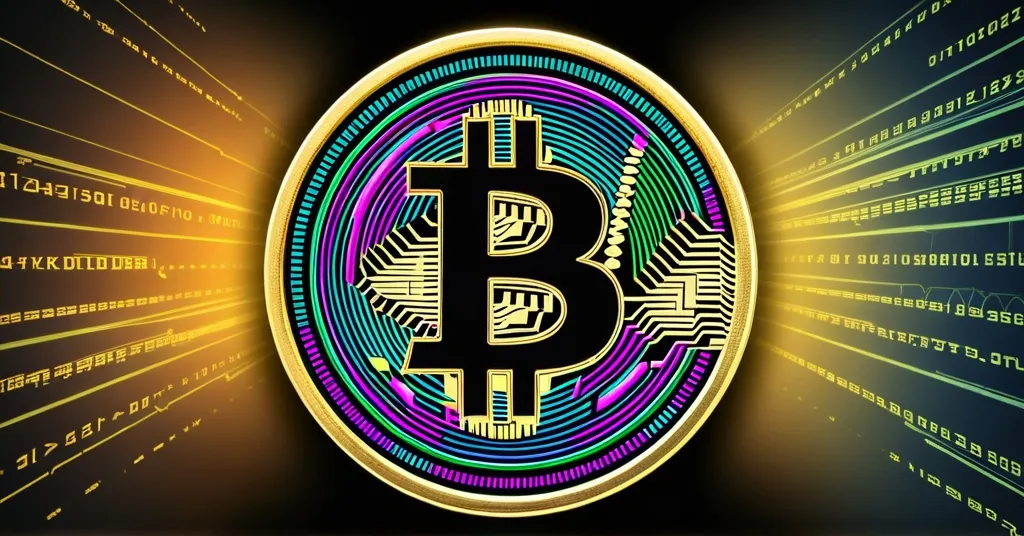Casey Rodarmor’s Bitcoin Ordinals: Turning Satoshis into NFTs

What are Bitcoin Ordinals?
Bitcoin Ordinals, a groundbreaking concept introduced by Casey Rodarmor in 2023, allow users to inscribe data onto individual satoshis, turning them into non-fungible tokens (NFTs). Think of it as owning a piece of Bitcoin history, unique and distinct, much like a rare trading card or a signed baseball card.
- Casey Rodarmor’s 2023 innovation
- Leveraging 2021’s Taproot upgrade
- Non-fungible satoshis
- Digital art and historic preservation
- $170 million in sales by March 2024
- Challenges like market saturation and privacy
Casey Rodarmor, a visionary in the Bitcoin community, unveiled Bitcoin Ordinals in 2023, capitalizing on the 2021 Taproot upgrade. This upgrade enabled the inscription of data onto individual satoshis, the smallest unit of Bitcoin, named after its mysterious creator, Satoshi Nakamoto. Each satoshi can now carry unique data, making it non-fungible. Non-fungible tokens, or NFTs, are digital assets that can’t be exchanged on a one-to-one basis, much like how a limited edition stamp differs from a regular one.
The possibilities with Bitcoin Ordinals are as exciting as they are diverse. Imagine owning a digital piece of art inscribed on a satoshi, a fragment of Bitcoin’s rich history. From digital art to collectibles, historic preservation, and even censorship-resistant data storage, Bitcoin Ordinals offer a new frontier for digital ownership.
The market for Bitcoin Ordinals has shown substantial promise. In March 2024, sales hit over $170 million, a clear sign of burgeoning interest. Yet, it’s not all smooth sailing. Echoing the challenges faced by Ethereum’s NFT market, Bitcoin Ordinals face hurdles like market saturation and privacy concerns due to on-chain data. There’s also the question of Bitcoin’s fungibility, the very essence of its design as a decentralized currency, potentially at risk. For more on this, see the impact on Bitcoin’s fungibility.
To get started with Bitcoin Ordinals, you’ll need a wallet that supports Taproot addresses. Sparrow Wallet is a popular choice, while marketplaces like Ordinals Market and OpenOrdex are where you can buy, sell, or trade these unique satoshis. Beware, though, not all wallets are up to the task. Trust Wallet, Mycelium, and Blockchain.com, for example, don’t support Taproot addresses, so choose your tools wisely.
While Bitcoin Ordinals open up exciting avenues, they also raise crucial questions. Are we witnessing the future of digital ownership, or is this another bubble destined to burst? While the parallels to Ethereum’s NFT market are clear, Bitcoin’s unique qualities might give Ordinals the edge to succeed where others stumbled. Yet, as champions of decentralization and privacy, we must ask if these innovations align with Bitcoin’s core principles or if they’re a distraction from its primary mission.
Bitcoin Ordinals embody the innovative spirit that propels the crypto world forward, challenging the status quo and pushing the boundaries of what Bitcoin can do. They’re like the cool, rebellious cousin of traditional NFTs, crashing the party with a unique twist. But as bitcoin maximalists, we must keep a keen eye on whether these developments serve the broader goal of disrupting the financial system and promoting effective accelerationism.
As Bitcoin Ordinals continue to evolve, they represent a bold step towards redefining digital ownership. Their success, however, hinges on navigating the challenges ahead, ensuring they enhance rather than detract from Bitcoin’s fundamental values.
Bitcoin Ordinals are Bitcoin’s answer to NFTs, allowing a way of inscribing data onto a specific satoshi (one-millionth of a bitcoin) in a way that makes that satoshi distinct from others or non-fungible.
Sales of BTC Ordinals reached over $170 million in March 2024.
The market for Ethereum NFTs took a massive drop in recent years, with the value of NFT collectibles falling around 90% overall.
Key Questions and Takeaways
What are Bitcoin Ordinals, and how do they work?
Bitcoin Ordinals are a method to inscribe data onto individual satoshis, making them non-fungible. They use the Bitcoin network’s Taproot upgrade to assign unique identifiers to satoshis, allowing them to be tracked and traded as unique assets.
What are the potential use cases for Bitcoin Ordinals?
Bitcoin Ordinals can be used for digital art, collectibles, historic preservation, and as a form of censorship-resistant data storage. They enable users to own and trade pieces of Bitcoin history or unique digital assets.
What challenges might Bitcoin Ordinals face?
Challenges include market saturation, privacy concerns due to potential on-chain surveillance, threats to Bitcoin’s fungibility, and the risk of affecting Bitcoin’s overall market dynamics if a significant derivatives market develops.
How can one buy, sell, or trade Bitcoin Ordinals?
To engage with Bitcoin Ordinals, one needs a wallet compatible with Taproot addresses, like Sparrow Wallet. Marketplaces such as Ordinals Market and OpenOrdex allow users to buy, sell, or trade these Ordinals, often associated with digital artworks or other assets.
What impact have Bitcoin Ordinals had on the market so far?
As of March 2024, sales of Bitcoin Ordinals have reached over $170 million, indicating a growing but still relatively small market compared to Ethereum’s NFT market during its peak.



